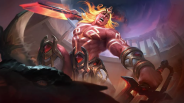Bees are indispensable for pollination and food production. Since the population of bees is on the decline, with many are on the verge of extinction and declared endangered, there is a wake-up call for private gardens to make new bee habitats by making suitable modifications in their plant mix and upkeep.
The existential threat faced by bees is pervasive and the concerns border on implications on food production.
Cheerios Seeds Campaign Backfires
To address the decline of bees, Cheerios maker General Mills set up a campaign called "Bring Back the Bees" and sent out 1.5 billion wildflower seeds to be planted across the United States.
Despite the initiative, it turned out that the seeds are not so suitable in all regions with many of the wildflowers considered invasive in nature. One example is the Forget-Me-Not plant, which is banned in Massachusetts as it is considered a noxious weed. Another is the California poppy, which is listed as an "invasive exotic pest plant" in the southeastern states.
The demand for private gardens as bee habitats stems from the depleting agricultural land and the lack of diversity of flowers which puts bees under stress.
Insects also need variety of food rich in vitamins and minerals to keep them healthy, according to scientists.
That makes the urgency of making private gardens as bee-friendly places paramount. Already many garden lovers are taking a keen interest in helping the numbers of bees increase by adding flower-rich habitats in their places around homes.
When more flowers bloom, hyper pollination leads to more fruits, seeds, and vegetables. Some practical tips to create a bee-friendly garden are discussed below.
Give A Facelift To The Existing Garden
Giving the existing garden a makeover is the first step toward a bee rich garden. Just rework the lawn by adding more flowering plants that can support bees with food and habitat.
To feed the bees better, use native flowers that are uniquely adapted to the region. To get more information on plants and bee-friendly plants, check the websites of regional botanic gardens and plant nurseries.
In choosing flower plants, it is good to ignore double headed flowers as their nectar production capability is less and bee access to pollen also becomes difficult. It is best to go with single flower tops, such as daisies and marigolds.
Highly hybridized plants produce very little pollen as they are bred not to seed.
Ensure Blooms In All Seasons
In deciding the plant mix, make sure there are at least three types of flowers so that blooms sustain across all seasons providing bees with continuous food. Try Crocus for Spring, Cosmos for Summer, and Asters for Fall.
Maintaining a "bee bath" is essential in offering fresh and clean water. Keep a shallow container of water with pebbles that they can use to land on while drinking. The container must always have fresh water to ensure that they know they can return to the spot every day.
Also, make sure that homes for solitary bees are created. Spare them a patch of land at a sunny spot in the garden where the uncultivated part can help them burrow.
Wood- and stem-nesting bees will be searching for bamboo sections, branches, hollow reeds, or nesting blocks of untreated wood to rest. To retain mason bees, offer water and mud in the garden.
The environment of the garden must be made toxic free. It is important to keep out pesticides from the garden. Not only are they toxic to bees but also affect children and others who frequent the garden. To control pests, spiders, ladybugs, and praying mantises are enough.
Grow The Right Flowers
In choosing flowers in a bee garden, sustained bloom throughout the year must be a priority. There are different types of flowers: hardy annual, half hardy annual, perennial, hardy biennial, and hardy shrub.
Cosmos is half hardy and grown from seeds as an annual flower and is best for the bees.
Growing an average 3 feet, the flower of Mexican origin can be planted without worrying about frost and carry flat and delightful flowers throughout the summer.
Daisies are easy to grow as they stay colorful from late summer until autumn.
Hard annual sunflowers come in many heights and colors range from yellow to red. Choosing calendulas or marigolds are great for bees. Dead head is best for a longer flowering period.
Grow More Trees
Common garden trees are a great source of nectar and pollen for bees especially those bloom in late winter or spring.
There is a vast choice in garden trees such as hawthorn, rowan, crab apple, hazel, alder, willow, ornamental cherry and horse chestnut besides fruit trees. Flowers of common garden shrubs, such as berberis, potentilla, forsythia, lavender, rosemary, mahonia, viburnum, and cotoneaster are also excellent sources of food for bees.
ⓒ 2025 TECHTIMES.com All rights reserved. Do not reproduce without permission.
![Best Gaming Mouse For Gamers With Smaller Hands [2025]](https://d.techtimes.com/en/full/461466/best-gaming-mouse-gamers-smaller-hands-2025.png?w=184&h=103&f=6fd057ef777bd39251d4e7e82e9b23f1)



![Best iPads that Students Can Use in School [2025]](https://d.techtimes.com/en/full/461431/best-ipads-that-students-can-use-school-2025.jpg?w=184&h=103&f=516289300e12e9647ef3d5bd69f49b70)